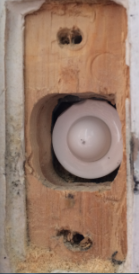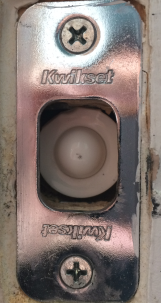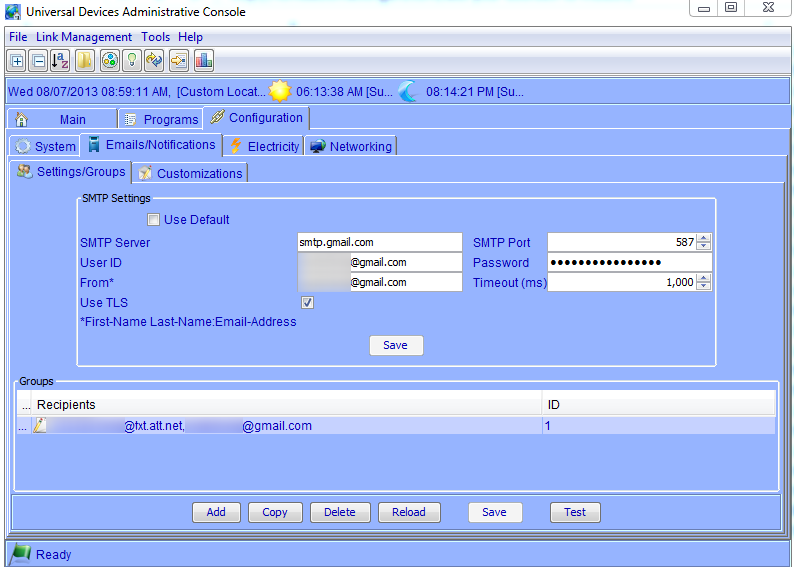I wish Insteon would give us a tiny, wireless, DIY module (like Arduino) to allow us to build our own input/output devices for an Insteon network that are more compact and modular than the IOLinc. Until then, we’ve got to make due with what we’ve got.
Recently, the Hidden Door sensor was released, and we’re getting closer to that dream with the miniaturization of our sensing devices. This device is basically just a button that sends command to indicate whether it’s pushed or not, but because the size is coming down from the previous model, it has all new applications.
Specifically, the last state (locked or unlocked) of the MorningLinc lock is recorded in the ISY-994i, but that doesn’t necessarily indicate whether the door is locked or unlocked, since manually throwing the deadbolt doesn’t change the state. I’ve talked about how I’d like to write a program to automatically lock the door at night – but only if it’s unlocked to avoid unnecessary beeps.
Now, with the hidden door sensor, sensing whether a door is locked is possible. The trick is to remove the metal strike plate and drill a 3/4″ hole behind it:

The steps are pretty simple:
- Remove the deadbolt plate
- Drill a 3/4″ hole inside the deadbolt cavity
- Snip off the screw mount on the sensor
- Slide the sensor into the hole
- Replace the deadbolt plate
- program the sensor
… and now you’ll know whether the deadbolt has actually been thrown:




I’ve seen a lot of talk about doing this with NC contacts connected to an alarm panel. One of the ‘difficult things’ always discussed is getting the position of the sensor set so that it only indicates ‘locked’ when the bolt is fully thrown and not partially thrown.
What is your experience with the range of sensitivity that the insteon door sensor has and deadbolt position?
Nick,
I haven’t had any problems at all. I have a MorningLinc lock that doesn’t easy to “land” in a partially thrown position, and because of the design of this sensor, you’re able to pretty accurately position it within the hole inside the deadbolt cavity. You can drill it in deeper if the button is preventing the bolt from going all the way to the closed position, and put a spacer behind it if you’re not getting accurate ‘lock’ signals because the deadbolt isn’t fully pressing the button. So with a little trial and error you should be able to fix it in exactly the right position for 100% accuracy, with the only down-side being you’ll have to replace the AA battery once/year or so.
I considered using the IOLinc or some other NC contact (like the TriggerLinc) but nothing seemed very practical given I didn’t have or want any additional bulk either around the door frame (or the IOLinc plugged into a nearby outlet), so I’ve been really happy with this approach so far!
-Matt